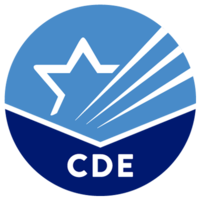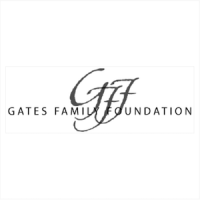RISE FUND
Innovation in Education
Education change-makers gain the chance to have their ideas amplified during a crucial moment in the midst of a pandemic.

Problem: Pandemic Highlights Colorado Education Inequity While Threatening to Widen Gaps
Solution: Harness a Crisis to Illuminate & Reward New, Innovative Education Approaches
Defining the Problem
Even before the COVID-19 pandemic, the achievement gaps in Colorado have steadily separated Black and Latino students from their White peers.
The state’s largest school district has worked to close some of the biggest gaps. According to the National Assessment of Educational Progress, a federally administered test, Black fourth-graders in Denver Public Schools (DPS) scored 36 points below their white counterparts on the reading portion of the exam in 2017. The gap was five points wider than the national average for large cities. DPS’ Hispanic students fared even worse: The split between Hispanic and Latinx and white learners grew to 40 points — 13 points greater than the big-city mean.
Statewide data showed equally troubling statistics for Hispanic and Latinx students, Colorado’s largest- and fastest-growing ethnic group. According to the Colorado Department of Higher Education, Hispanic and Latinx students had the lowest average educational attainment in 2017, and the lowest college enrollment rate of any ethnic group in the state. The gap between the educational attainment of white vs. Hispanic and Latinx students is the second largest in the nation, behind only California. While the four-year high school graduation rate for white students in Colorado is 84 percent, for Hispanic and Latinx students, it is 70 percent. And whereas the postsecondary credential attainment rate for whites in Colorado currently is 64 percent, for Hispanics it is 29 percent.
The story for Black and African Americans in Colorado is even more sobering. While their 39 percent attainment rate currently is higher than for Hispanics and Latinx students, and has increased slightly since 2012, their 10-year completion rate has decreased, making the gap even more challenging to address.
With academic interruptions due to the pandemic, many of these historic gaps could widen and make it difficult for students who were already behind to catch up, let alone reach their highest potential.

Searching for a Solution
How might we come alongside Gov. Jared Polis to help distribute available federal funds in a way that creates sustainable innovations aimed at closing equity gaps, improving student learning and enhancing operational efficiency for Colorado’s public education system?
While the COVID-19 pandemic in 2020 brought its own unique set of challenges for student learning and the equity gap in public education, it also brought an opportunity in the form of federal stimulus funds. Utilizing those funds, Colorado Gov. Jard Polis initially designated $510 million to Colorado school districts and $450 million to higher education, with a formula determining how much each institution received.
However, as is often the case, our partners in the education community had already begun thinking about how to use these funds to help serve as an incubator for new ideas. Colorado Department of Higher Education Executive Director Angie Paccione perhaps said it best: “Never let a crisis go to waste.”
Paccione believed the pandemic and resulting federal stimulus funds offered a unique opportunity to identify and reward institutions who were using the new lens provided by the crisis to improve operating efficiencies and break barriers in reaching and teaching diverse and low-income students.
At Gary, we also saw an opportunity to come alongside the governor and our state’s education leaders to increase the funds available and help identify the most promising institutions who – according to Paccione could “think creatively and innovatively about solutions to today’s challenges that could lead to lasting positive changes in our ability to support all students for years to come.”

Leveraging resources across business, policy and philanthropy
Gary Community Ventures partnered with Gov. Polis and the Gates Family Foundation to offer resources and design support in helping the State of Colorado create a first-in-the country competitive grant fund called the Response, Innovation, and Student Equity (RISE) Fund. The grant used $32.7 million in federal funds from the Governor’s Emergency Education Relief Fund to support high-needs school districts, charter schools, and public institutions of higher education in creating sustainable innovations to improve student learning, close equity gaps, and enhance operational efficiency for pre-K – 12 through higher education.
Gary CEO, Mike Johnston, was honored to chair the RISE Fund selection committee, and oversaw a process that received hundreds of applicants.
“While we want to help solve the inequalities that have been exacerbated through COVID, we really want to create the innovation that will directly address the underlying inequities that have always been present in underserved communities,” Johnston said. “We saw incredible inspiration, dedication and innovation from each one of our applicants.”
“We must continue to educate our children of our rich history but also to look toward the future endeavors that they will each face in their lifetime.”
Chairman Manuel Heart, Ute Mountain Tribe
“By expanding career and technical opportunities and engaging with industry partners, we offer Adams 14 students more post-secondary choice.”
Superintendent Don Rangel, Adams 14 School District
“COVID-19 has impacted our students’ academics, emotional health and after-school opportunities. These funds allow us to address these things.”
School Director Becky McLean, Academy 360 Public Charter School
Youth Success Team Contacts

Delivering Breakthrough Solutions
“
Every Colorado student should have access to a quality education and these amazing ideas and innovative programs from improving early childhood education to increasing apprenticeship opportunities for high-schoolers will help improve our schools and build back stronger than before the pandemic
Jared PolisGovernor of Colorado
In total, 32 schools, districts and public higher education institutions received grants from the RISE Fund, with submissions coming from every corner of the state, including small and mid-size school districts, BOCES, charter schools, and mid- and large-size public institutions of higher education.
Additionally, we partnered with Colorado Evaluation and Action Lab to conduct rigorous evaluations of the RISE grantees so the rest of the state and country can learn from what works. The goal of this process is to ensure that school districts, schools, institutions of higher education, can learn from the best practices developed through these innovative projects.
For the full list of winners, click the links below:
Round 1 RISE Fund Winners
Round 2 RISE Fund Winners
All our Ventures are Joint Ventures
Where breakthrough solutions already exist, we help GROW them with our resources and partnership. As we venture to solve some of the toughest problems facing Colorado kids and families, we’d love for you to join us.







